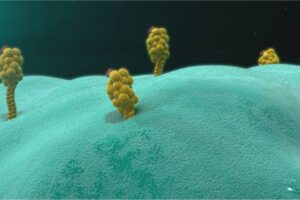Overview
Human Leukocyte Antigen HLA typing is performed to assess compatibility of recipients and potential donors for solid organ and hematopoietic stem cell (HSC) transplantation. Extensive clinical data support a correlation between transplant outcome and the degree of HLA similarity (“match”) between donors and recipients.
Other examples of HLA typing used in clinical medicine include:
- Disease association – certain diseases such as celiac disease, diabetes, and rheumatoid arthritis have a strong association with particular HLA alleles.
- Pharmacogenomics – severe allergic or hypersensitivity reactions to certain drugs may be related to HLA genotype.
- Vaccine development – vaccine response is critically dependent on the presentation of antigenic peptides by HLA molecules. HLA polymorphism affects antigenic peptide binding and the ability of the immune system to respond to pathogens and vaccines.
How HLA Typing is Performed?
Methods for HLA typing have evolved significantly since the first initial observations of anti-leukocyte antibodies over 50 years ago. Scientists now have a better understanding of the incredible genetic diversity of the HLA region which currently consists of over 28,000 different alleles.[1]
HLA antigens are divided into types: Class I (A, B, C) and Class II (DR, DP, DQ). Methods for HLA typing are either based on serological detection of HLA antigens, or more commonly by molecular techniques to identify HLA alleles by genetic analysis.

Serological HLA Typing
HLA typing methods were initially based on the detection of expressed HLA molecules on the surface of lymphocytes using defined panels of antisera.[2] Unfortunately, serological HLA typing suffered from several drawbacks including:
- Requirement for live cells
- Panels of antisera must be maintained
- Only low resolution (antigen-level) typing obtainable
While serology may provide a level of resolution adequate for solid-organ transplant applications, it is inadequate for HSC transplant matching.[3] Most clinical HLA laboratories in the U.S. converted to using DNA-based typing over the past decade to obtain more robust, accurate and reliable typing results.
However, serological typing still has a useful role as an adjunct typing method. For example, serological typing may be used to determine whether a particular HLA allele is actually expressed at the cell surface.
DNA-based HLA Typing
HLA typing using molecular techniques has now become the clinical standard for patient-donor matching. DNA-based typing does not require live lymphocytes and can be performed using a variety of source materials including whole blood, buccal swabs, biopsy samples and frozen tissue. DNA-based typing is also able to resolve allele-level differences in HLA genes that cannot be detected by serology.
Several approaches to DNA-based HLA typing are used in clinical laboratories today, offering a range of reported typing resolution levels from low (antigen-level) to high (allele-level).
1. PCR with sequence specific primers (PCR-SSP)
One commonly applied approach is to use panels of sequence specific DNA primers which amplify particular HLA alleles or allele groups. PCR-SSP is a very rapid test that can be performed in 3 – 4 hours and is commonly used for typing deceased organ donors when speed is an important consideration.[4]
2. Sequence specific oligonucleotide probing (PCR-SSOP)
Another commonly employed approach is to detect HLA polymorphisms in locus-specific PCR products using short oligonucleotide DNA “probes” in a hybridization assay. This method is used to determine HLA – A, – B, – C, – DR, – DQ and – DP locus types at an intermediate level of resolution, somewhat higher than antigen-level typing. This technology is commonly used in flow-based systems for high volume HLA typing and allows for relatively low-cost typing for HSC donor screening or other applications involving large sample batches.[5]
3. Sanger sequencing-based typing (SBT)
Sanger sequencing-based typing provides high resolution HLA typing for HLA – A, – B, – C, – DR, – DQ and – DP locus alleles, which is required for HSC transplantation. Although Sanger SBT provides higher resolution than SSP or SSOP, it is limited by including time-consuming protocols, low throughput, unphased data and genotype ambiguity.[6]
4. Next-generation SBT
High-resolution SBT by next-generation sequencing (NGS) is rapidly becoming the gold standard for high-resolution HLA genotyping. NGS technology offers higher throughput, ability to interrogate more regions of the HLA genes, and reduced genotype ambiguity. The adoption of NGS HLA typing has led to an enormous expansion of the number of new HLA sequences and alleles submitted to HLA databases.[7] The major limitations of NGS include high instrument and reagent cost, long sequencing time and the technical expertise required.
Conclusion
Accurate HLA typing is critically important for transplantation and cellular therapies. HLA typing is also increasingly used for disease association and to help prevent adverse drug reactions.
At Cytologics, our product portfolio includes immune cells with high resolution HLA-A, HLA-B and HLA-C typing. We understand that HLA information is vital to the outcomes of your experiments. Contact us today to discuss how we can support your research with HLA-typed immune cell products.





